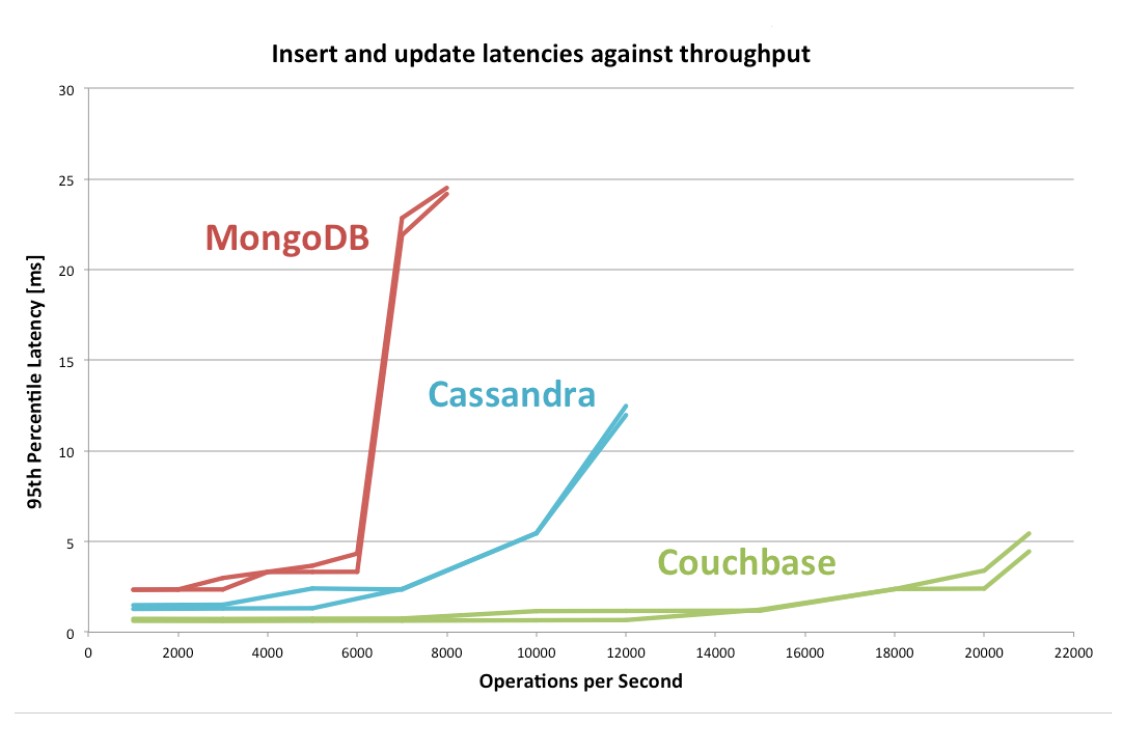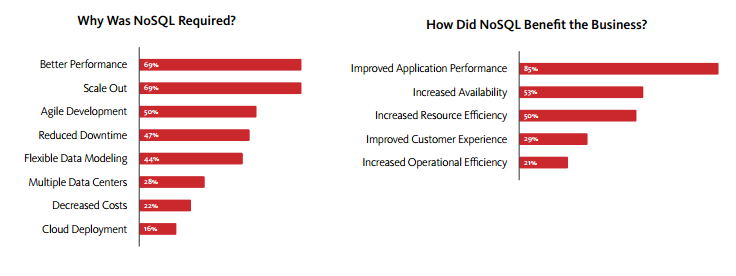Why we need NoSQL Database Management Systems
Interactive applications need high-performance and scalability. If your application is not fast enough, users may quickly abandon it and look for alternatives.But interactive applications have changed dramatically over the last 15 years, and so have the data management needs of those apps:
Not that long ago, 1000 daily users of an application was a lot, and 10000 was a quite rare extreme case. Today, with the growth in global Internet use, the increased number of hours users spend online, and the growing popularity of smartphones and tablets, it's not uncommon for apps to have millions of users a day.
Unfortunately, the capabilities of traditional RDBMS for working with big data are limited: They cannot provide the necessary scalability and performance. NoSQL databases were invented to solve the problem. They provide high throughput, low latency, and horizontal scaling.

Source: Popular NoSQL solutions
See also Mongo DB 3.0 vs Couchbase (2015) and Couchbase vs Cassandra (2015)
Is MongoDB as bad as Couchbase developers say?
Source: Altoros Systems, see also Why NoSQL?
To gain experience with using NoSQL database systems, I recommend viewing recorded webinars and then using first the community edition of Couchbase.
See also: Couchbase as Open Source and Couchbase Architecture
German speaking users might want to read Warum NoSQL?.
Please read NoSQL vs Relational in order to understand why NoSQL databases are called "document-oriented", cannot be normalized and may therefore never replace relational DBMS.
Typical features of NoSQL databases (e.g. those of Riak) imply that NoSQL can support databases of unlimited size distributed across any number of machines. See also Riak compared to Couchbase and other NoSQL DBMS.

Source: Couchbase Marketing Study (2014): The Top 10 Enterprise NoSQL Use Cases
Read also:
- ParStream: A DBMS for the Internet of Things
- Classes of NoSQL Database Management Systems
- N1QL = SQL + JSON
- Popularität der meist genutzten Datenbanksysteme — seriös, wird sogar von Gartner zitiert
- Popularität Relational vs NoSQL
- Popularität Open Source vs kommerziell
- Data Management Report 2015
stw4682NSQLCS — NoSQL . Couchbase . Systems — News?
Mehr + B G E + S H A + More